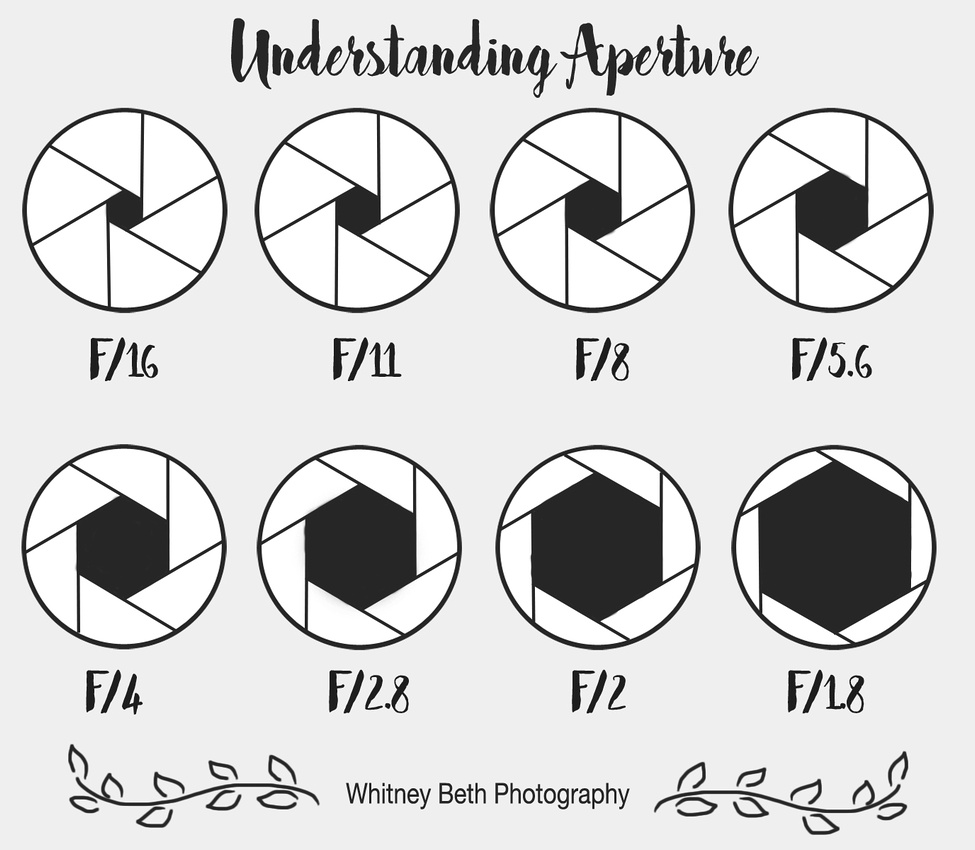Understanding Aperture | Salt Lake City Family + Senior Photographer
When learning how to shoot in manual there are so many new words and functions to learn. In my opinion, aperture is one of the most important for getting the shot you want. Aperture is referring to how much light is let into your camera. The more light - the smaller the f stop (another term for aperture) and the more wide open you shoot. By understanding aperture, you are able to compose and have the image turn out the way you want. Have you ever wondered how some people are able to take pictures with a "blurry background?" That is called depth of field and is achieved by controlling your aperture. I created this graphic to show you how a few different f stops look like on your lens.

 As you can see, an F stop of 1.8 has the lens "all the way open" - letting lots of light in. While f/16 is nearly closed and only a bit of light is able to enter. So how does this translate to pictures? If you are in a situation with lots of low light - someplace indoors or in a really shaded area, you need to have your lens wide open to bring in as much light as you can. If you are someplace outside, midday where the sun is really bright, you don't need much light to make a picture. This calls for a higher f stop - such as f/16.
As you can see, an F stop of 1.8 has the lens "all the way open" - letting lots of light in. While f/16 is nearly closed and only a bit of light is able to enter. So how does this translate to pictures? If you are in a situation with lots of low light - someplace indoors or in a really shaded area, you need to have your lens wide open to bring in as much light as you can. If you are someplace outside, midday where the sun is really bright, you don't need much light to make a picture. This calls for a higher f stop - such as f/16.
Aperture, as mentioned above, determines how the image will look. The lower the number, the less will be in focus, whereas the higher the number, the more things will be in focus. I created a little labor of love to show you guys what the same image set up looks like at different apertures.


My focal point of the succulent up front remains the same, but as I change my settings to adjust for the aperture more and more things are brought into focus. In the f/1.8 shot only the the succulent is clear, but when you look at the plants in the f/16 shot you are able to see the details on the far back plant. This technique of shooting the same set up with different apertures is called, Bracketing. Bracketing is an excellent way to grasp and understand how your aperture works.


To really demonstrate the depth you can achieve from bracketing and understanding how your aperture works, I set up a single snake plant and shot down into it's leaves. The first image of f/1.8 is blurry in many parts - save it the spot of leaf that I focused on. As I adjust my aperture and bracket all the way to f/16 you are able to make out the details in the soil, pot and even the floor!
By understanding how to read light as well as determine what you want your picture to look like you simply adjust your aperture accordingly and you are on your way to shooting like a pro! Do you have any questions? If so, leave them in the comments! Happy shooting!
